UK: Desert Foxtail-lily Hawkmoth, RUS: Aeremurosovyi Brazhnik
Hyles siehei svetlana Shovkoon, 2010, Nota lepid. 33(1): 69.Type locality: Shagyray Plateau, Aktobe region, western Kazakhstan (46°52'35''N,58°02'05''E).
(Taxonomic notes. (i) Although adults look superficially like Hyles centralasiae (Staudinger, 1887), mtDNA analysis has shown that this taxon is related to Hyles siehei (Püngeler, 1903), which itself is now regarded as specifically distinct from Hyles centralasiae (Hundsdörfer et al., 2009).
(ii) Although originally described as a subspecies of Hyles siehei, De Freina & Geck (2014) raised this taxon to distinct species level.)Holarctic; western Palaearctic region. Pleistocene refuge: Polycentric -- Turkestan refuge.
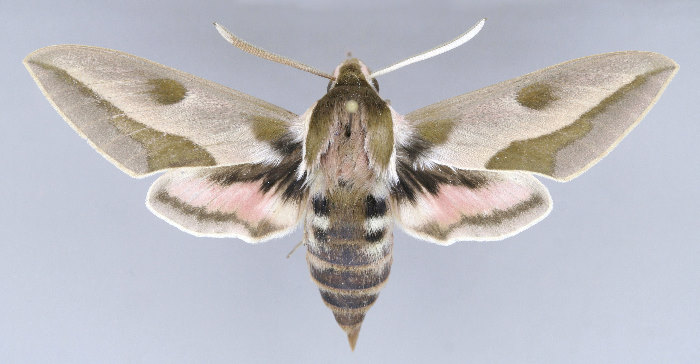
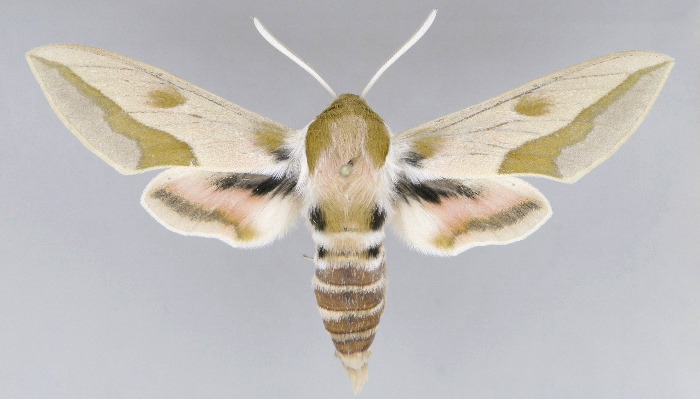
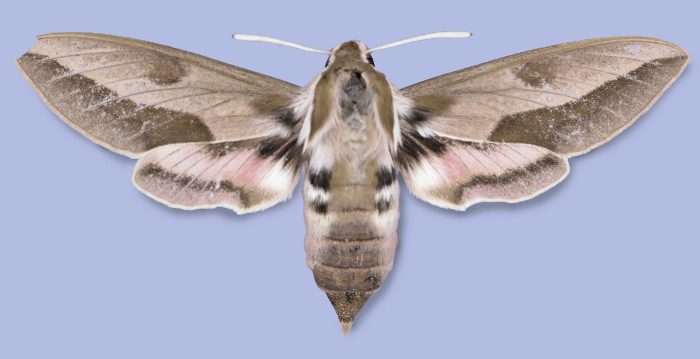
Wingspan: 55--65mm. Forewing with a large discal spot in the pale median stripe. Central gap in the same stripe reduced, or completely absent, compared with Hyles centralasiae. Central pink area of the hindwing can be intense or faint; black (or dark-olive) post-discal band narrower and separated from the black basal area along the costa. Some individuals with a distinct rosy hue on both wings and body. Antennae distally incrassate in both sexes and, in females, more clavate. Pilifer with long setae medially, and shorter ones laterally. Labial palpus smoothly scaled, concealing base of proboscis; scaling at apex of the first segment not arranged in a regular border on inner surface; second segment without apical tuft on inner side. Abdomen conically pointed, with strong dorsal spines, usually arranged in two transversal rows. First segment of foretarsus shorter than in Hyles euphorbiae (Linnaeus, 1758), with fewer, longer spines. Male genitalia similar to all other species of Hyles. Uncus and gnathos beak-shaped, narrow. Valva broadly pear-shaped. Sacculus terminates in a thin simple, tapering process. Phallus tubular with apex bearing well-expressed dentate curved spur (Shovkoon, 2010).
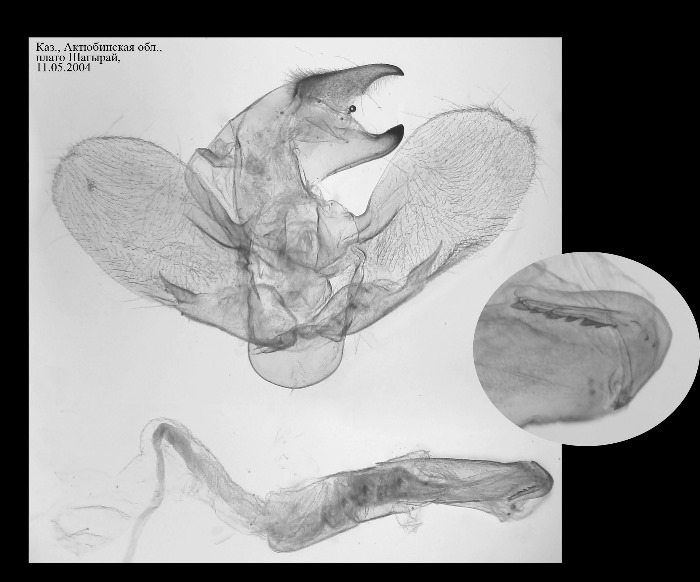
This taxon is so similar in appearance to Hyles centralasiae that it had been included within that species up until recently. Compared with Hyles centralasiae, adults of Hyles svetlana differ in their smaller size, although there is some overlap. In colour, Hyles svetlana has a prevalence of olive tones; in Hyles centralasiae the colours are lighter, with a predominance of beige tones. Hindwing of Hyles svetlana with a more clearly defined, wide, black submarginal band. Underside of wings and abdomen in Hyles svetlana rose-coloured; in Hyles centralasiae cream coloured, or, rarely, faintly rosy (Shovkoon, 2010).
Hyles svetlana differs from Hyles siehei in: (1) its smaller size; (2) having forewings with a clearly defined postdiscal patch; (3) the lighter forewing oblique median stripe being always clearly defined and not merging with a dark field at the wing edge, as is often seen in Hyles siehei; (4) the hindwing having a more clearly defined and wider black submarginal band (Shovkoon, 2010).
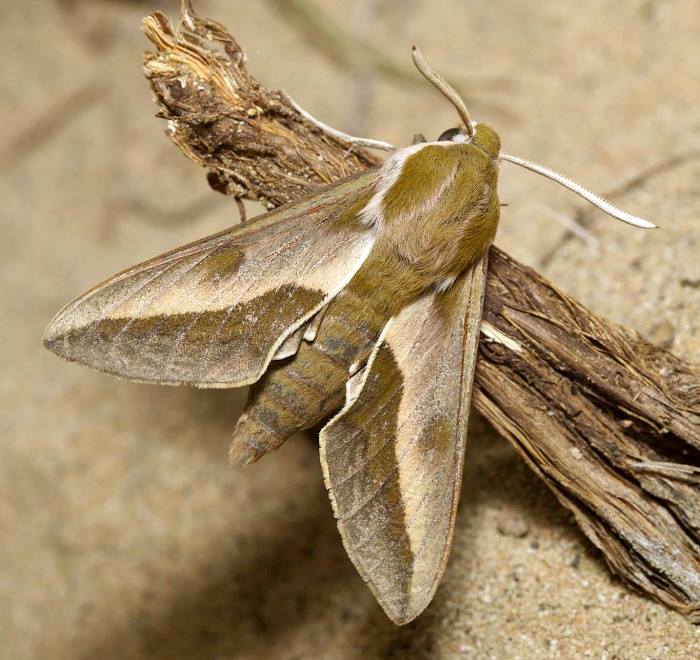
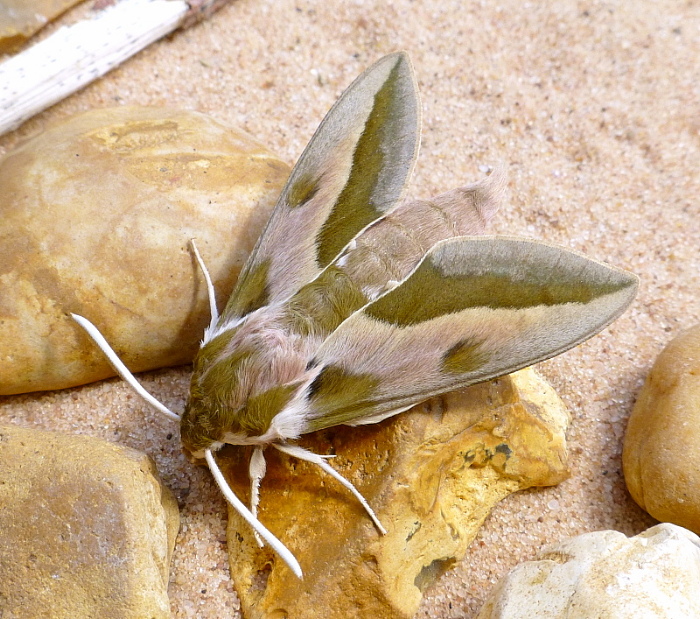
Restricted to lowland, semi-desert areas where Eremurus (foxtail lily) is common. The type locality, the Shagyray Plateau, is a continuation of the Ustyurt and Donyztau Plateaux, and does not exceed 30km in width. The eastern and southeastern slopes are flat, the western has a more broken character, i.e. steep and penetrated by a system of deep ravines. Altitudes here do not exceed 330m a.s.l., but typically range between 100m and 150m. The vegetation of this rugged terrain varies considerably with altitude, being mostly composed of Aristida karelini, Aeluropus littoralis, Stipa lessingiana, Stipa sareptana, Bromus squarrosus, Salsola chinensis, Salsola dendroides, Salsola verrucosa, Salsola rigida, Atriplex patula, Haloxylon aphyllum, Halocnemum strobilaceu, Camphorosma monspeliaca, Calligonum aphyllum, Atraphaxis spinosa, Astragalus varius, Caragana frutex, Alhagi pseudalhagi, Clematis glauca, Euphorbia sclerocyathium, Artemisia dracunculus, Artemisia austriaca, Artemisia frigida, Ephedra equisetina, Tamarix gracilis, and Elaeagnus angustifolia (Shovkoon, 2010).
Major differences in the ecology of Hyles centralasiae and Hyles svetlana have been noted. Shchetkin (1952, 1960, 1975) repeatedly wrote about the biology of Hyles centralasiae (as Celerio centralasiae) in Central Asia, noting differences between desert and mountain forms of the moths. In 1952 he pointed out that "moths of Celerio centralasiae from desert and semi-desert regions (Bet-Pak-Dala, Mujun-Kum, Repetek) were smaller than those individuals developing in both foothill and higher altitude regions. Desert specimens had an average wingspan of 57mm (55-60mm), those from other regions averaging 65mm (60-70mm)". Typical altitudes for mountain populations range between 500 and 2800m a.s.l. (Shchetkin 1952, 1960, 1975; Danner et al. 1998; Derzhavets, 1984; Jordan, 1912; Pittaway, 1997–2009). The altitude at which Shovkoon (2010) collected Hyles svetlana did not exceed 250m a.s.l. Indeed, for coastal areas of the Aral Sea altitudes were -28 m. Eremurus ambigens Vved. and Eremurus olgae Rgl. have been recorded as hostplants for mountain populations (Shchetkin, 1952, 1975), but for desert populations Shchetkin stated only that larvae fed on Eremurus species. It is clear that Shchetkin had not seen larvae of any desert population, as he only gave a description of the mountain form (Shovkoon, 2010). The larvae found by Shovkoon differed markedly from those described by Shchetkin. It should also be noted that Eremurus inderiensis, unlike other members of the genus, is not montane and only grows in sandy desert and semi-desert biotopes (Fedchenko, 1949).
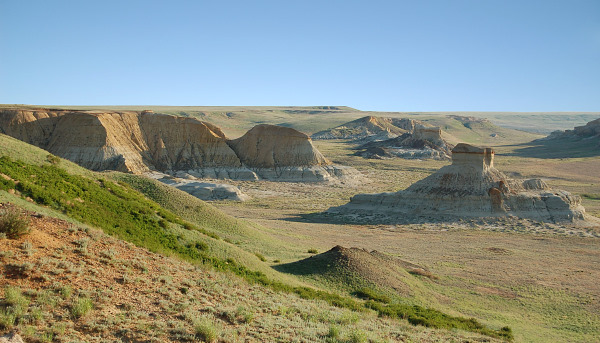
Univoltine; late April to late May, with a peak in mid May (Shovkoon, 2010).
OVUM: Small, 1.2 mm in diameter, almost spherical, pale green. Laid directly on flower buds or on a stalk of the hostplant near the ground (Shovkoon, 2010).
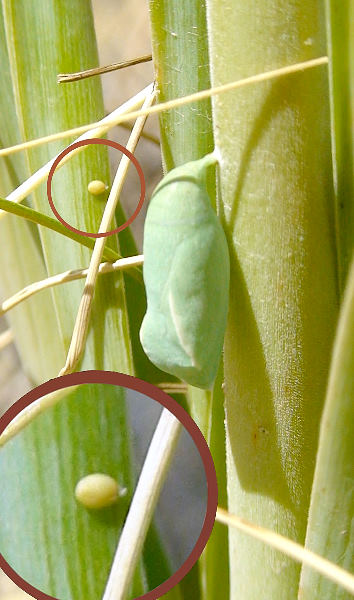
LARVA: Full-fed 65--70mm. The newly-hatched larva is 2.5mm long, pale rose-coloured, with blackish brown head, legs, thoracic shield and horn; the latter is short and vertical. The body bears rows of setae of the same colour. Head and thoracic segments rose-tinted. In the second instar the primary body colour is pale rose, which matches the flowers of the host. There is also a whitish dorso-lateral line bearing rudimentary eye-spots, and a hint of an orange dorsal line. The third instar is similarly patterned and coloured, although the primary colour can vary, being greenish-olive in some. The dorso-lateral line is more prominent, the eye-spots pure white, with a pinkish-white ventro-lateral line. The head, anal clasper and horn are black, the dorsal line pale orange. In the fourth instar the primary body colour is greenish-olive with scattered white, frequently darkly-ringed, speckles. The head, legs, horn and thoracic shield are black. Full grown larvae are greenish-olive with scattered white, frequently dark-ringed, speckles, and with a bright yellow dorsal line. On each side, the dorso-lateral line sports large, white or yellow, black-ringed eye-spots. Horn, head, legs and anal shield black. Spiracles yellow, black ringed (Shovkoon, 2010).
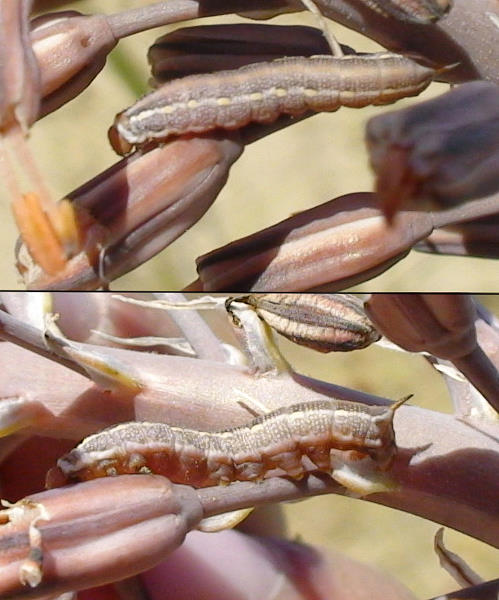
Newly hatched larvae prefer feeding on the pollen-sacs, and often sit on the flowers. As they grow, all parts of the flower are eaten, including the immature ovaries. Larvae of later instars feed openly on the tall, columnar flower spikes (Shovkoon, 2010). Mitroshina (1989) recorded densities of 12.7 larvae per 100 hostplants examined for northern Turkmenistan.
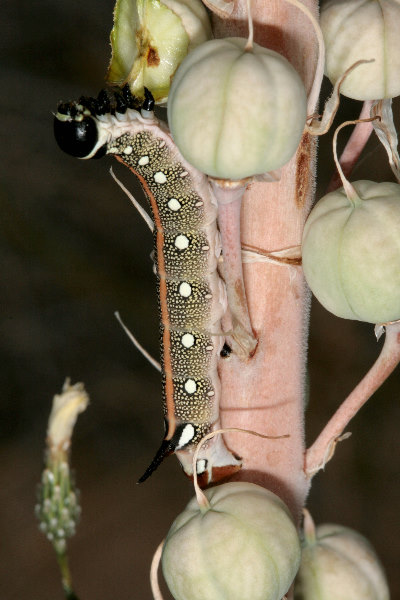
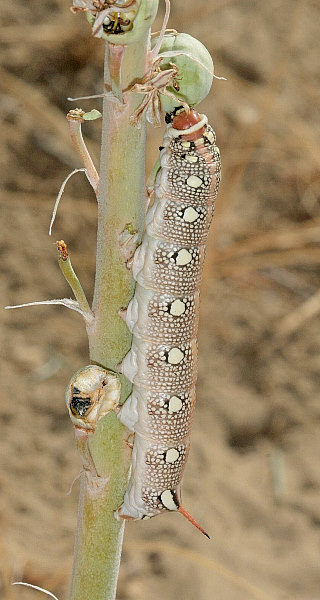
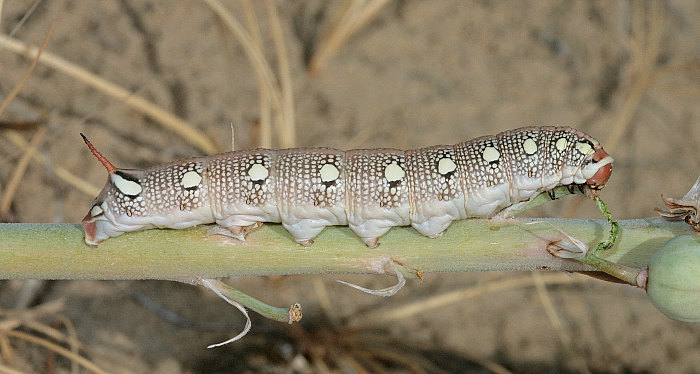
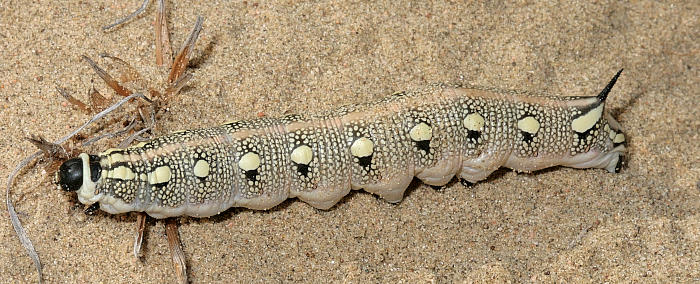
Most likely to be found in May and early June, with egg to pupa taking as little as 9-11 days (Shovkoon, 2010).
Hostplants. In Turkmenistan, the flower- and seedheads of Eremurus, especially Eremurus sogriganus, Eremurus inderiensis, Eremurus ambigens, Eremurus anisopterus and, possibly, other species (Mitroshina, 1989; Toropov, Milko, Zhdanko & Evdoshenko, 2023). In Uzbekistan on Eremurus anisopterus (Patzold et al., 2023).
PUPA: 37--42 mm. Pale greenish-brown with semi-transparent cuticle. Proboscis fused with body, not projecting anteriorly. Cremaster large, bent ventrally. Formed in a loosely spun, net-like cocoon among debris on the ground. The overwintering stage, but many pupae can diapause for several years (Shovkoon, 2010).
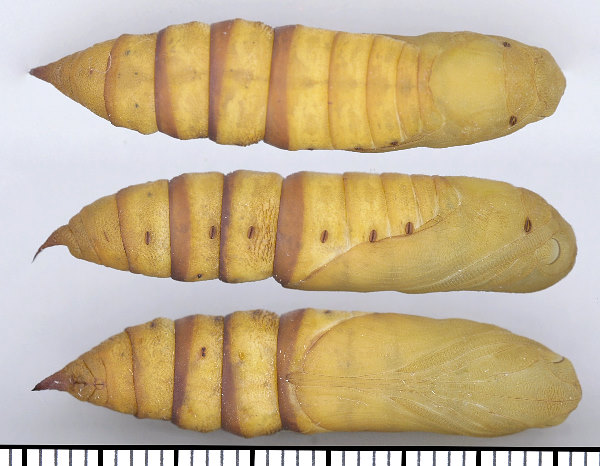
None recorded.
Lowland southern Kazakhstan, from the shores of the Caspian Sea across to the Chinese border (Shovkoon, 2015; Toropov, Milko, Zhdanko & Evdoshenko, 2023) and lowland Uzbekistan (Jonathan Newman, iNaturalist 2022; Patzold et al., 2023) and northern Turkmenistan (Shovkoon, 2010; Shovkoon, 2011; De Freina & Geck, 2014; Toropov, Milko, Zhdanko & Evdoshenko, 2023).
Extra-limital range. Recorded from south-west Mongolia (Yakovlev & Doroshkin, 2017), but this requires confirmation as specimens recorded from northern Xinjiang Province, China, by Pittaway & Kitching (2000), where typical Hyles centralasiae (Staudinger, 1887).
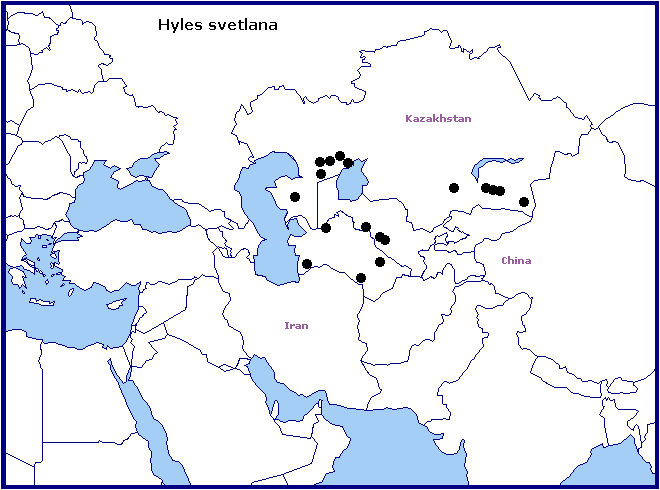
None.
 Return to species list
Return to species list